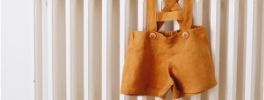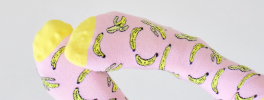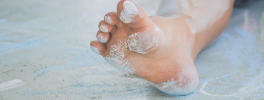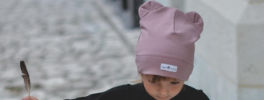Right or left shoe - how to teach a child to distinguish which shoe to put on his foot?

Putting on shoes independently is an extremely valuable skill that children most often acquire between the ages of 2 and 4. It not only speeds up daily outings, but also builds confidence and gives a sense of independence. However, despite their sincere intentions, many children have trouble putting their shoes on the right feet. It is possible to help them with this. Learn how to teach your child to distinguish the right shoe from the left.
A properly developing, healthy child should learn to distinguish sides - between the ages of 5 and 6. However, learning to distinguish sides - right from left - is not enough to put shoes on the right feet.
How to teach a child to distinguish the right shoe from the left?
To a toddler, both shoes look identical. What's more, often even after putting them on, the child does not feel that "something is wrong", and walking in poorly dressed shoes does not have a positive effect on the development of little feet, as well as posture. That's why you need to help him distinguish the right footwear from the left.
If you want your toddler to start putting on shoes correctly, start drawing his attention to this issue. You can, for example, when getting ready to go out, ask which side is right and which is left and give the toddler the right shoes, or ask your child to point out which shoes to put on and correct him if he shows wrong.
However, it is not always possible to be close to the child when he or she is getting dressed, and correcting shoes may discourage him or her from trying to be independent in the changing room again. Therefore, it is also worth taking care of:
- stickers inside the shoes, e.g. in the form of two-piece puzzles - it is enough to place them, for example, on the tongue or insole, and then show the toddler that the shoes must be placed in the correct order for the picture to be complete. Instead of stickers, you can use, for example, interleaved patches or embroider some geometric figure,
- differentiation of footwear - if your child wears shoes tied with laces, you can replace one of them with a piece of a different color. In this way, the toddler will quickly learn that, for example, the black shoelace should be on the right side and the white one on the left. You can also color the insoles inside the shoes or choose models in two different colors,
- Velcro shoes - in this type of footwear the fastener always closes on the outside. This makes it easy to check whether the shoes are put on properly.
You can also show your child the differences in the shape of the shoe. However, in the case of winter models, sports shoes or sneakers, it may be difficult to see what the difference is between them.
It's also a good idea to position the shoes correctly before the toddler starts putting them on. This will help him pick up the right shoe right away.
Read more: Is it worth buying children's sneakers? Pros and cons
What footwear to choose to make it easier for your child to dress himself?
Wondering what else you can do to speed up getting out of the house in the morning? A good idea is to buy shoes for your child that are easy to put on. Great models will work:
- slip-on, such as athletic shoes from Geox - the lack of fastening eliminates the problem of untied laces or ill-fitting shoes to the foot. Thanks to the soft elastic welt, the shoes themselves adjust to the shape of the body, and thus do not fall when walking or put pressure on the foot. A great choice for children who are always in a hurry and waste time fastening their shoes,
- Velcro with a pull-out tongue, such as the Mido Noster snow boots - the Velcro can be completely unfastened and pulled out of the loops, so you can slide the entire tongue out and maximize the upper. This makes it much easier to put the foot inside, especially for winter boots,
- with rubber laces, for example, such as Lee Cooper textile sneakers - elastic laces are a great solution that significantly speeds up everyday dressing. You do not need to tie them, they always fit snugly into the shoe and solidly hold the foot. This allows you to freely run, jump or dance without the risk that the footwear will fall off and the laces will untie.
If you want to make sure that the footwear you choose will not cause problems for your child, immediately ask them to try them on after purchase. This way, if there is something wrong, you will be able to return the shoes to the store and choose another.
Take care of your child's independence, and the effort you put into learning to put on shoes will quickly pay off!





 Cookies
Cookies
comments (0)